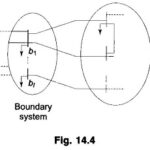State Estimation of Power System Articles:
Introduction to State Estimation in Power System: Introduction to State Estimation in Power System plays a very important role in the monitoring and control of modem power systems. As in case of load flow analysis, the aim of State Estimation in … (Read More)
Least Square Estimation Method: As we are going to seen that, the problem of power system state estimation is a special case of the more general problem of estimation of a random vector x from the numerical values of another related … (Read More)
Static State Estimation in Power Systems: As noted earlier, for a system with N buses, the state vector x may be defined as the 2N — 1 vector of the N — 1 voltage … (Read More)
Tracking State Estimation of Power Systems: Tracking State Estimation of Power Systems is important for real time monitoring of the system. As is well known, the voltages of all real system vary randomly with time and should therefore be considered to … (Read More)
External System Equivalencing in Power System: One of the widely practiced methods used for computational simplification is to divide the given system into three subsystems as shown in Fig. 14.4. One of these is referred to as the ‘internal’ subsystem and … (Read More)
Bad Data Detection in State Estimation of Power System: The ability to identify Bad Data Detection in State Estimation measurements is extremely valuable to a load dispatch centre. One or more of the data may be affected by malfunctioning of either … (Read More)
Network Observability and Pseudo Measurements: A minimum amount of data is necessary for State Estimation (SE) to be effective. A more analytical way of determining whether a given data is enough for SE is called observability analysis. It forms an integral … (Read More)
Application of State Estimation in Power System: In real-time environment the state estimator consists of different modules such as network topology processor, observability analysis, state estimation and bad data processing. The network topology … (Read More)



